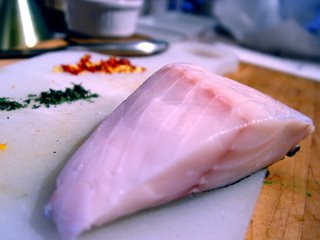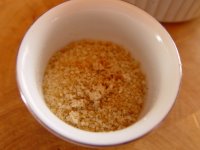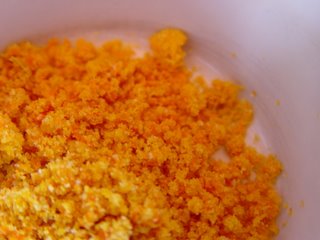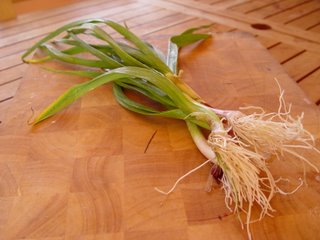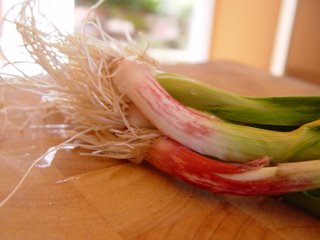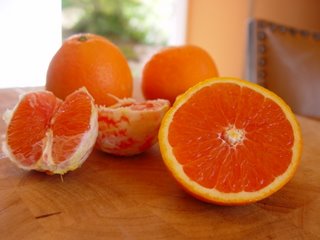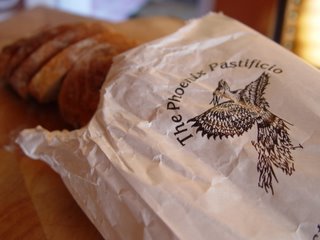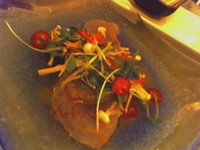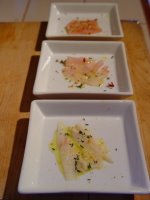 In last year's food issue of the New Yorker, one of the many suppliers who finds unsual fish for Dave Pasternak of Esca, described Pasternak's curious ability to taste a fish raw and know exactly what he wanted to do with it. With no thoughtful fish wholesalers to look after my interests, I must rely on trial and error.
In last year's food issue of the New Yorker, one of the many suppliers who finds unsual fish for Dave Pasternak of Esca, described Pasternak's curious ability to taste a fish raw and know exactly what he wanted to do with it. With no thoughtful fish wholesalers to look after my interests, I must rely on trial and error.This can be an expensive hobby. It requires that you buy small chunks of multiple types of fish. Ordering less than a quarter pound of fish can make a monger scowl. So it was that I came home from Hapuku Fish Shop with quarter pounds of escobar, opah, and sabelfish.
It can be tough to know what you'll be getting with a given raw fish, but I was pretty comfortable with these choices. I'd had opah and sabelfish at a recent dinner at Bar Crudo.
All three were preapred with La Amarilla de Rond olive oil, citrus flavored salts, thyme, and a small dice of dried red pepper.
I was skeptical of the sabelfish's appearance, but its flavor and texture (almost velvety) made it the winner of the batch. The opah had a mild taste that allowed the flavor of these seasonings to really come through, but the texture prevented the olive oil from being absorbed. The escobar was similiarly mild, but accepted more of the oil.
